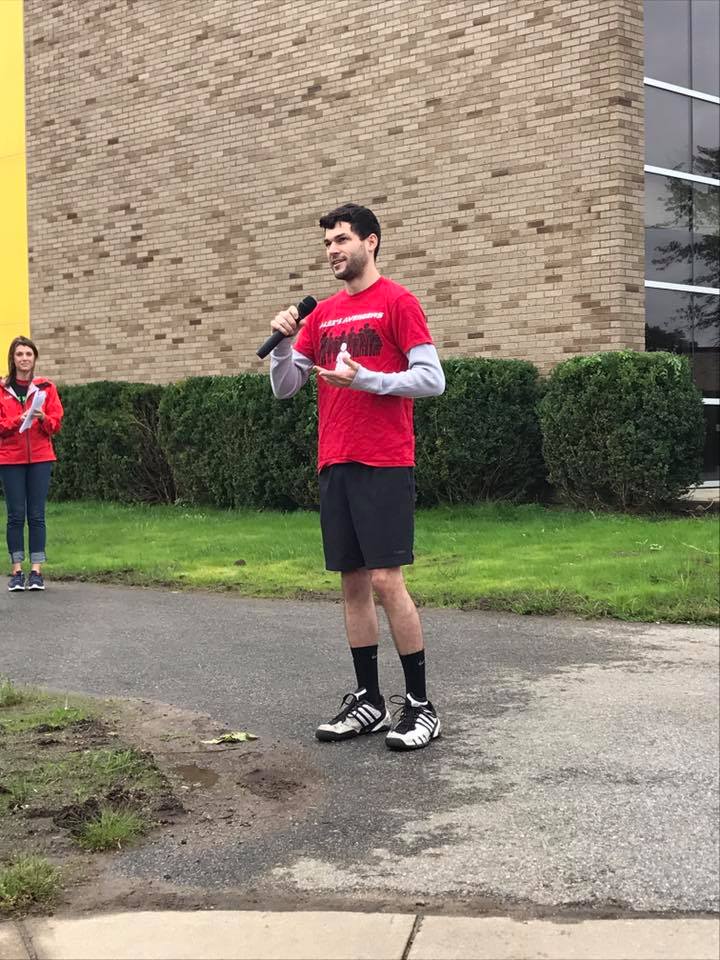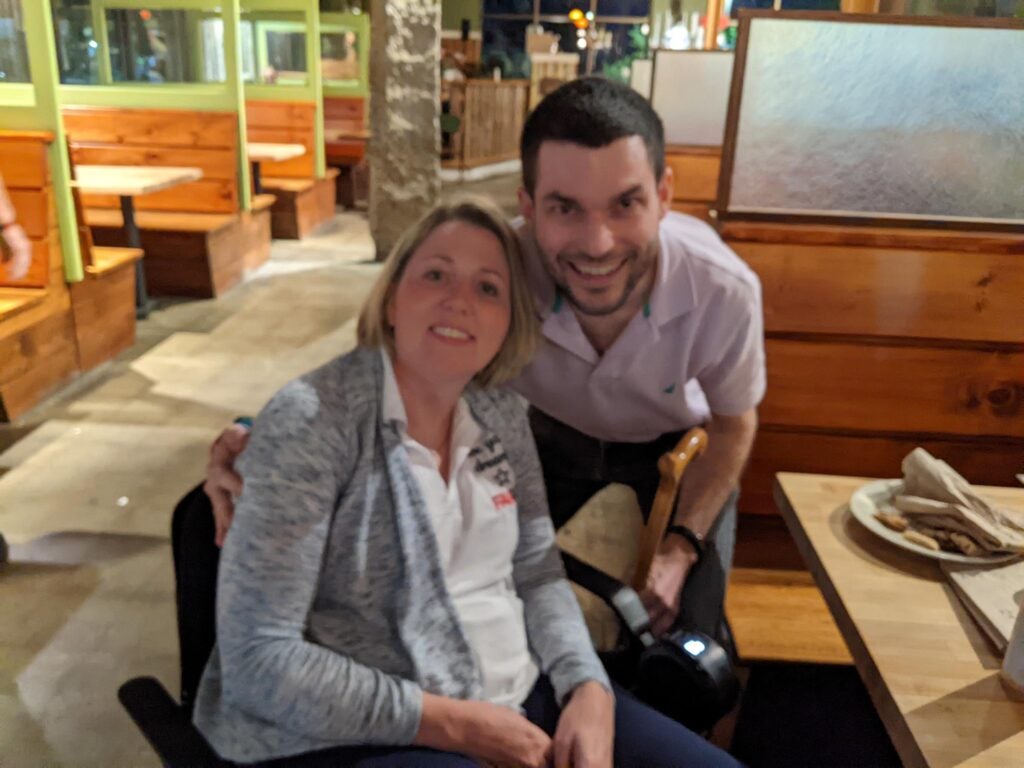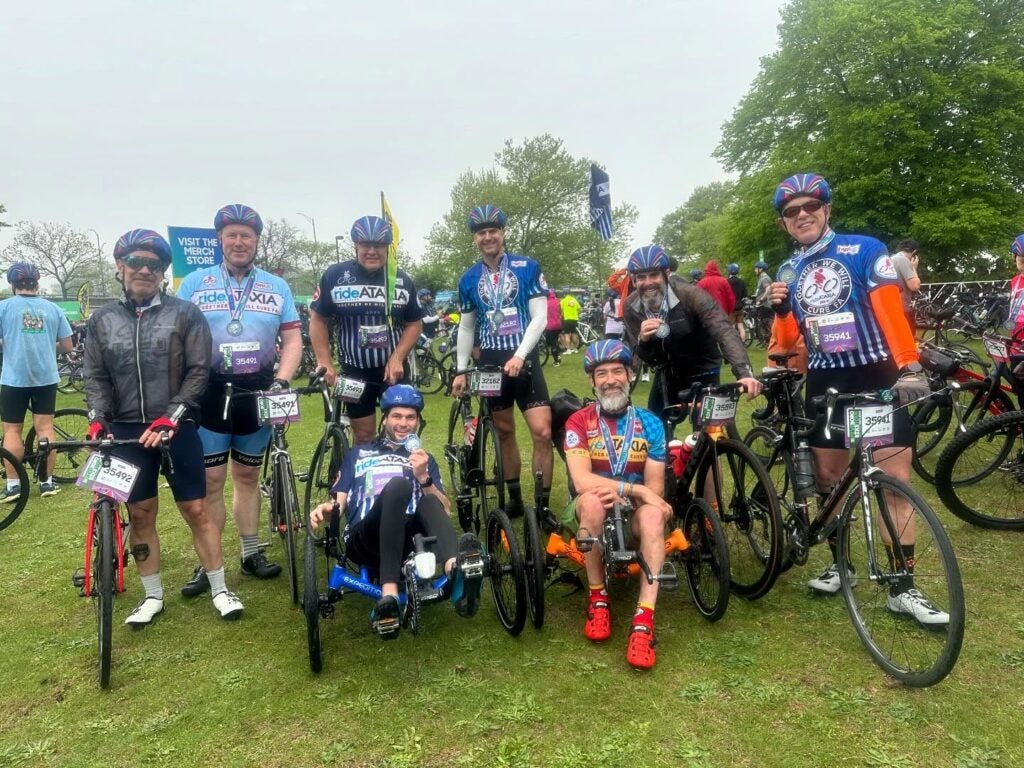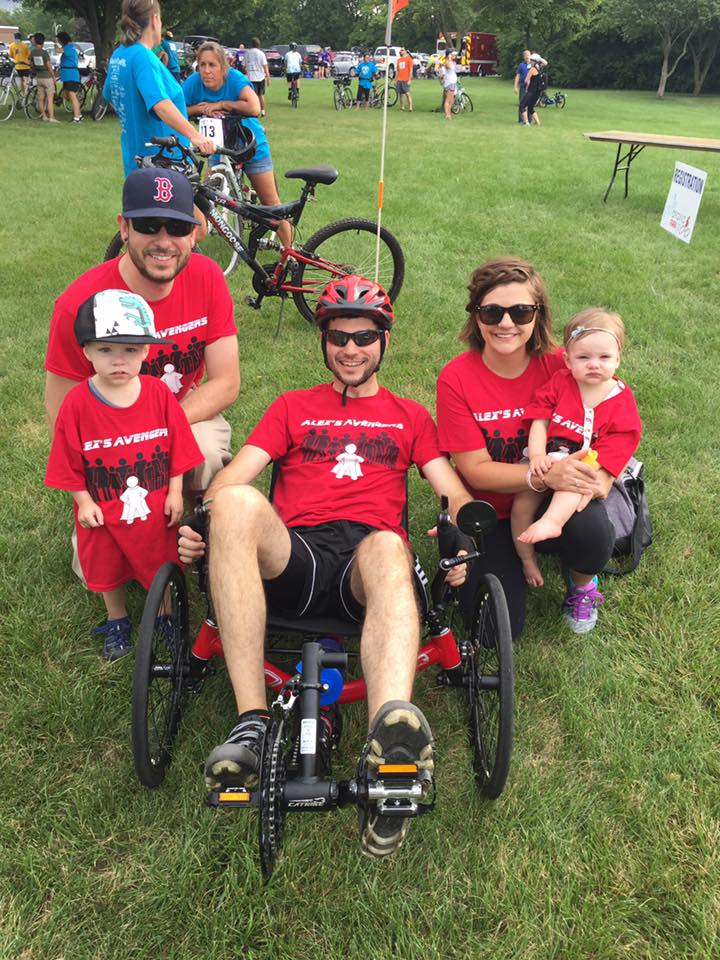Alex lives with Friedreich’s ataxia (FA), a rare, genetic, and progressive neuromuscular disease that mainly affects the central nervous system and the heart. He is a patient advocate with the Friedreich’s Ataxia Research Alliance’s (FARA) FA Ambassador program. He also serves on the Board of FARA, working with local FA friends and families to host the rideATAXIA Hometown family-friendly bike ride fundraiser outside Boston each summer.
Alex shared his story with PTC to help raise awareness of FA.

While you’re reading this, reach out to grab a cup of water or mug of coffee and take a sip. You’ve probably done this so often, your body performed the movements smoothly and instinctively, orchestrating hundreds of muscles to work together and lift the liquid to your lips. Now enter my mind and sip my tea. Your entire body feels exhausted even though you haven’t done any strenuous activities today. You consciously motivate yourself to reach out your hand towards the mug. Even though you know the path your hand should take, some of the muscles over or under stimulate, so the motion isn’t smooth. You go slowly because you have to consciously think about every minute position in the movement – it’s mentally exhausting! You are staring at your hand and the mug because with poor proprioception, you have no idea where your hand is in space unless you are looking at it. You clasp the mug and carefully lift it towards your mouth. Some muscles with poor neurological connection aren’t used enough, so they are too weak to support the mug, forcing you to adjust your motion to engage working muscles. You can’t feel the liquid sloshing around in the mug and therefore can’t subconsciously adjust your arm to keep it smooth, so it spills out the side onto your fingers. Your reflexes are non-existent and pain signaling is slow, so by the time you feel the burns on your fingers, a quarter of the mug has spilled onto your lap. Now your body reacts to the pain and sends a signal to your hand, jolting all the muscles in a spastic, uncontrolled motion, spilling the mug onto the floor. But that last sip that survived the chaos… mmmmm.
When it comes to my day-to-day life with FA, the “what” I do in a typical day may look similar to the “what” in a healthy person’s day. The key difference in a day with FA is “how” I accomplish all those same things. Brushing my teeth and getting dressed takes more time and focus as the movements are less controlled. I need more time in the morning to “wake-up” my legs, stretching them out and activating the muscles before I can safely get walking. I can’t carry things as I walk, so I’m always rolling my desk chair around with me and using it like a cart. Popping in the grocery store after work to shop for dinner is a monumental task, so I opt for more food/grocery pickup and delivery options. I am still able to accomplish most of the same tasks anyone does throughout the day, but the amount of focus, energy, and physical adaptations required are drastically different.

My FA diagnostic odyssey was relatively quick, taking just over two years. I started to notice signs of shaky balance in my early 20’s, playing club sports or hiking with friends. When it was clear this was more than “being out-of-shape” or “eating the wrong diet” I began seeing a neurologist in Massachusetts. Several MRI scans and gallons of blood samples didn’t get us to an answer. I moved to Texas with my job and continued testing with a local neurologist.
Fortunately for me, he follows other FA patients, and we were able to correctly identify FA through an ataxia blood panel test. Unfortunately, we got to this after more scans, fluid testing, EMG tests and a lumbar puncture (ouch!). It was strange to spend so much time and money to get to a definitive answer, only to find that answer brought on a new, terrible reality.
Luckily, I am surrounded by caring and understanding people who can help with my physical limitations. My most difficult challenge with FA is mental – frustration and motivation. Having to consciously focus on every movement, every body position, and a micro-plan to safely adapt to every task is EXHAUSTING. Add to that the chronic fatigue inherent with FA due to biological processes… Motivating myself to do even the littlest of tasks can become a battle in my head. Then, I am able to accomplish less or to a lesser degree than what I envisioned, which ushers in the frustration. I find myself constantly managing my expectations and energy to minimize my frustration and avoid dropping into a depressive state. I’d love to tell you I found a good trick to make this work, but I haven’t; sometimes I get it right, other times I don’t. My favorite saying that puts this constant struggle into perspective is: “it doesn’t matter how many times you fall as long as it’s always less than the times you get up.”

People living with FA should be treated like people. We will have good days, and we will have bad days like anyone else. Not everything we encounter and experience is due to FA.
Also, I hear that “people with disabilities shouldn’t be treated differently.” This may be controversial, but I disagree with that. People with FA SHOULD be treated differently; with patience and compassion. Don’t judge me or treat me differently for struggling to carry groceries into my house. ALSO don’t push me aside and carry them in for me; enabling is NOT helping. Rather, show compassion for my limitations, try to understand what I am struggling through and ask me how you can help. If I reject an offer to help, know it is not because it is not appreciated but because I feel accomplishing this myself is important for my physical and mental well-being. Please be patient, encouraging and understanding. That is all.

The best advice for the FA community is to get involved. I am one of the most stubborn, independent people you will meet, but I realized that I cannot fight FA on my own. Meeting others with FA and getting to know them as friends helps normalize experiences in my own life. It also takes a lot of stress away knowing that you’re not the only one going through these issues and there is an army of researchers, clinicians, industry partners, etc. working tirelessly to find meaningful treatments for FA. You don’t have to jump in the deep end like I did, but attend a local event, meet another family with FA, talk to our partners working on the science. I’ve experienced the loneliness and depression when facing FA in isolation; it’s not sustainable. Our strength comes from each other so please connect with others, learn, adapt, and keep moving forward.
What do I hope the future looks like for those living with FA? Stability and predictability. It’s difficult to live your life and plan for the future when you don’t know what pitfalls FA will introduce along the way. Ultimately, I want a cure for FA, so no one has to endure the physical and mental challenges we all face every day. But for those of us living with FA now, something that can bring us stability and predictability now will enable us to adapt and pursue our goal and ambitions.